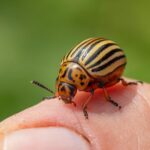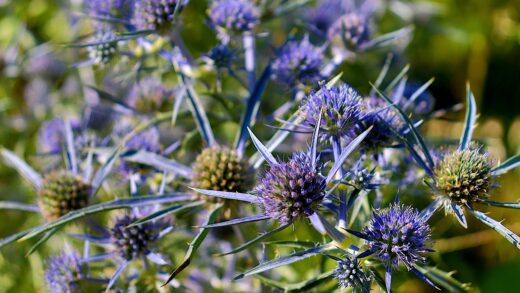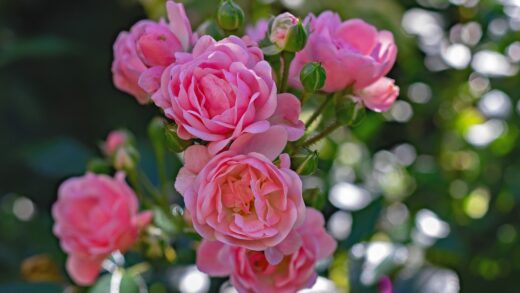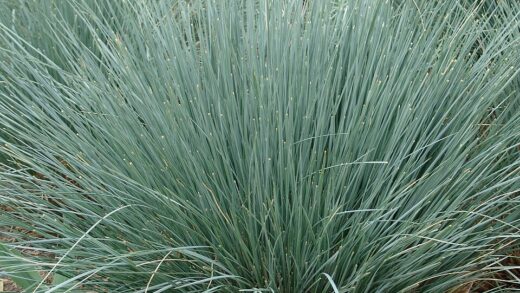One of the most appealing characteristics of the japanese lady fern is its remarkable resistance to most common garden diseases and pests. When provided with its preferred growing conditions—shade, consistent moisture, and rich, well-draining soil—this fern is typically a very healthy and trouble-free plant. Most problems that do arise are not caused by primary pathogens or insect infestations but are instead secondary issues stemming from environmental stress. Therefore, the best defense against potential diseases and pests is proactive, attentive cultivation and the maintenance of a healthy, suitable environment for the fern to thrive.
Issues like root rot, for example, are almost always a direct result of improper soil conditions, specifically soil that is too heavy and waterlogged. Similarly, scorched fronds are a physiological response to excessive sun exposure or inadequate water, not the work of a disease. By focusing on providing the correct cultural care, you can prevent the vast majority of problems before they ever have a chance to start. A healthy, vigorous plant is naturally more capable of fending off the occasional pest or pathogen that may appear.
That being said, no plant is completely immune to problems, and it is wise for the diligent gardener to be aware of the few potential issues that can occasionally affect the japanese lady fern. Recognizing the early signs of a problem allows for prompt and effective intervention, preventing minor issues from escalating into more serious threats to the plant’s health. The most common culprits are typically foliage-feeding insects and fungal issues related to poor air circulation or overly wet conditions.
Fortunately, the treatments for these occasional problems are usually straightforward and can often be accomplished using organic and low-impact methods. Chemical pesticides and fungicides should be considered a last resort, as they can sometimes be harsh on the delicate fronds of ferns and can disrupt the beneficial ecosystem of your garden. A focus on manual removal, improved cultural practices, and gentle organic treatments will resolve most issues while maintaining a healthy garden environment.
Common fungal and bacterial issues
Although relatively uncommon, the japanese lady fern can sometimes be affected by fungal diseases, particularly if it is grown in conditions that are overly wet or have poor air circulation. One potential issue is fungal leaf spot, which appears as small, discolored spots on the fronds. These spots may be brown, black, or tan, and can sometimes develop a yellow halo around them. While usually not a serious threat to the plant’s overall health, a severe infection can be unsightly.
More articles on this topic
To manage fungal leaf spot, the first step is to improve the environmental conditions. Prune any nearby plants to increase air circulation around the fern, and be sure to water at the base of the plant to keep the fronds as dry as possible. Remove and destroy any heavily infected fronds to reduce the amount of fungal spores in the area. In most cases, these cultural adjustments are sufficient to control the problem.
Root rot is a far more serious issue and is the most common disease-related cause of death for japanese lady ferns. This is not a primary disease but rather a condition caused by soil-borne fungi, such as Pythium or Phytophthora, that thrive in anaerobic (oxygen-deprived) conditions. When soil is compacted and waterlogged, these pathogens attack and decay the fern’s roots. The primary symptoms are wilting, yellowing fronds, and stunted growth, even when the soil is wet.
Preventing root rot is entirely about providing proper drainage. Ensure the fern is planted in well-amended, loamy soil and never in heavy, unimproved clay. For container-grown ferns, using a high-quality potting mix and a pot with ample drainage holes is essential. If root rot is suspected, you may need to lift the plant, trim away any black, mushy roots, and replant it in a better location or fresh, well-draining soil. Unfortunately, once root rot is advanced, it is often difficult to save the plant.
Identifying and managing common pests
The japanese lady fern is not a primary target for most garden pests, but it can occasionally play host to a few common insects. Slugs and snails can be particularly troublesome, especially in the spring when the tender new fiddleheads are emerging. These mollusks are attracted to the cool, damp conditions that ferns love, and they can cause significant damage by chewing ragged holes in the delicate fronds and even devouring entire new shoots overnight.
More articles on this topic
There are numerous ways to control slugs and snails. Hand-picking them off the plants in the evening or early morning is a very effective, albeit labor-intensive, method. Creating barriers of crushed eggshells or diatomaceous earth around the base of the plants can deter them, as they dislike crawling over sharp, abrasive surfaces. Traps consisting of a shallow dish of beer sunk into the soil are also a popular and effective way to reduce their numbers.
Aphids are another potential pest, although they are less common on ferns than on many other garden plants. These small, sap-sucking insects may occasionally colonize the tender new growth or the undersides of the fronds. A strong jet of water from a hose is often enough to dislodge a small infestation. For more persistent problems, insecticidal soap or neem oil can be used, but it is important to test the spray on a small area first, as the fronds of some ferns can be sensitive to these products.
Scale insects and mealybugs are less frequent but can sometimes appear, especially on ferns grown in containers or in very sheltered locations. These pests also feed on plant sap and can cause yellowing and reduced vigor. They can be more difficult to control due to their waxy, protective coatings. Dabbing individual insects with a cotton swab dipped in rubbing alcohol is an effective treatment for small infestations. Neem oil or horticultural oil can also be used, ensuring complete coverage of the affected areas.
Addressing physiological and environmental problems
Many of the issues that gardeners mistake for diseases on their japanese lady ferns are actually physiological problems caused by environmental stress. The most common of these is leaf scorch. This manifests as brown, crispy, or “burnt” areas on the fronds, particularly at the tips and edges. It is a direct result of the fronds being exposed to too much direct sunlight, especially harsh afternoon sun, which they are not adapted to tolerate. The only solution is to move the plant to a shadier location or to provide it with additional shade.
Browning frond tips can also be a sign of underwatering or low humidity. If the entire plant is looking wilted and the soil is dry, the browning is almost certainly due to a lack of water. Providing a deep, thorough watering should help the plant recover, although the already-browned tips will not turn green again. If the soil is moist but the frond edges are still browning, the issue is likely low atmospheric humidity, which can be addressed by misting, grouping plants together, or adding a nearby water source.
A general lack of vigor or pale, washed-out color in the fronds can be related to soil issues. If the soil pH is too high (alkaline), the fern may be unable to take up essential nutrients like iron, leading to chlorosis. This is why planting in an appropriate, slightly acidic soil is so important. Similarly, poor growth could be a sign of nutrient-deficient soil, which can be remedied by top-dressing with compost or a balanced, slow-release fertilizer in the spring.
Winter damage can also be a concern in colder climates, especially if the plant is in an exposed location or is not adequately mulched. Late spring frosts can damage or kill the newly emerging fiddleheads, setting the plant back for the season. To prevent this, ensure the fern is well-mulched over winter and consider covering it with a frost cloth if a late frost is forecast after the new growth has started to emerge.
Proactive strategies for a healthy plant
The most effective approach to managing diseases and pests on the japanese lady fern is prevention through good cultural practices. Start by selecting a healthy, robust plant from a reputable nursery, and inspect it carefully for any signs of pests or disease before bringing it into your garden. Planting it in the right location from the outset will prevent the majority of stress-related problems down the line.
Maintain good garden hygiene. Regularly remove and dispose of any dead or diseased fronds throughout the growing season. In the autumn or late winter, clean up the dead foliage around the crown of the plant to reduce the overwintering sites for pests and fungal spores. Ensuring good air circulation by giving the fern adequate space and not allowing it to be overgrown by neighboring plants is also a key preventative measure.
Promote a healthy garden ecosystem that supports natural predators. Birds, ladybugs, lacewings, and predatory ground beetles all help to keep pest populations in check. By avoiding the use of broad-spectrum chemical pesticides, you can encourage these beneficial creatures to make a home in your garden, providing a natural and continuous form of pest control that benefits all of your plants.
Finally, monitor your plants regularly. A quick inspection of your ferns every few days allows you to catch any potential problems in their very early stages when they are much easier to manage. Look under the fronds, inspect the new growth, and check the soil moisture. This habit of regular observation is one of the most powerful tools a gardener has for maintaining a healthy, beautiful, and resilient garden.
📷: David J. Stang, CC BY-SA 4.0, via Wikimedia Commons


















